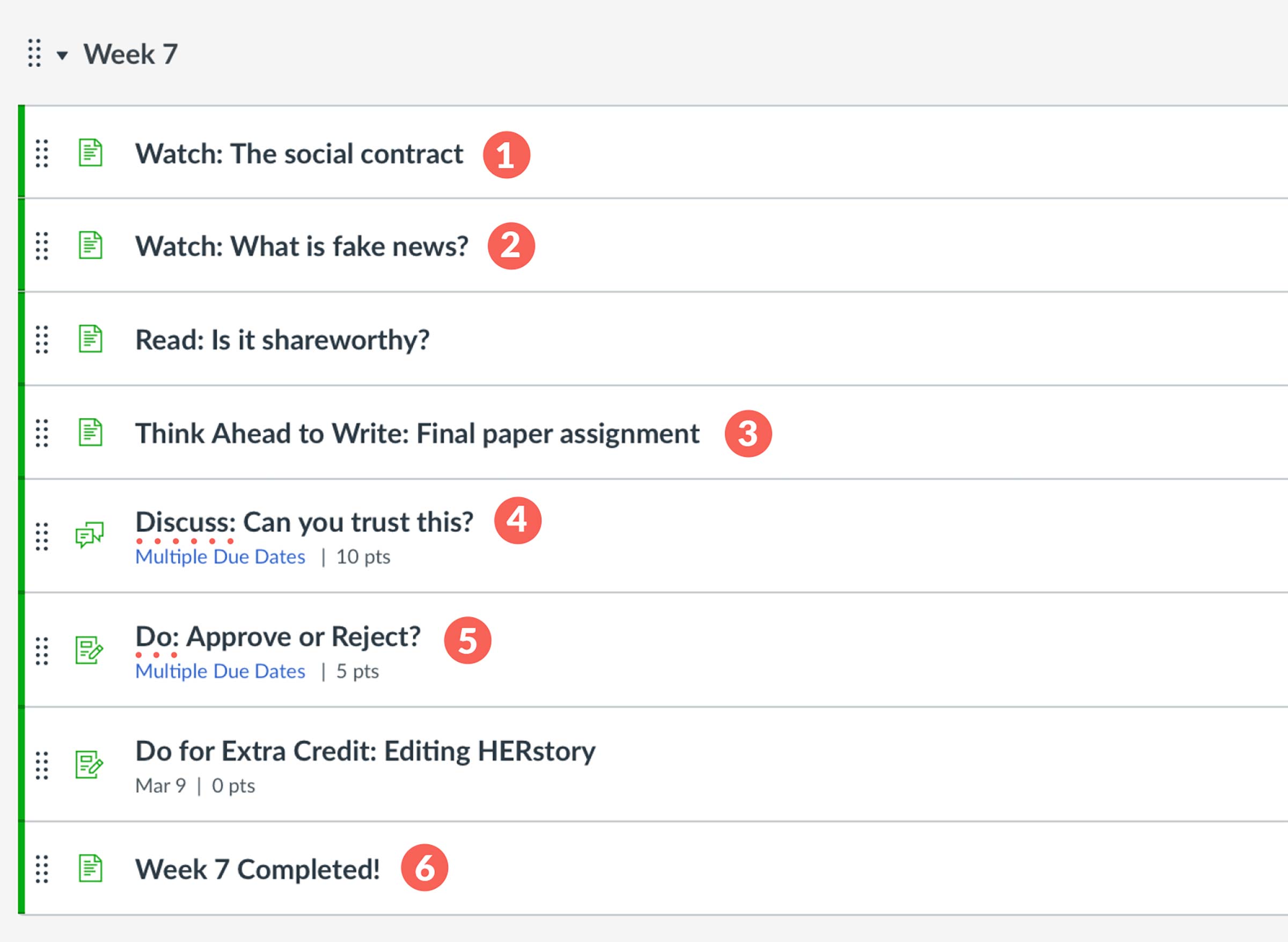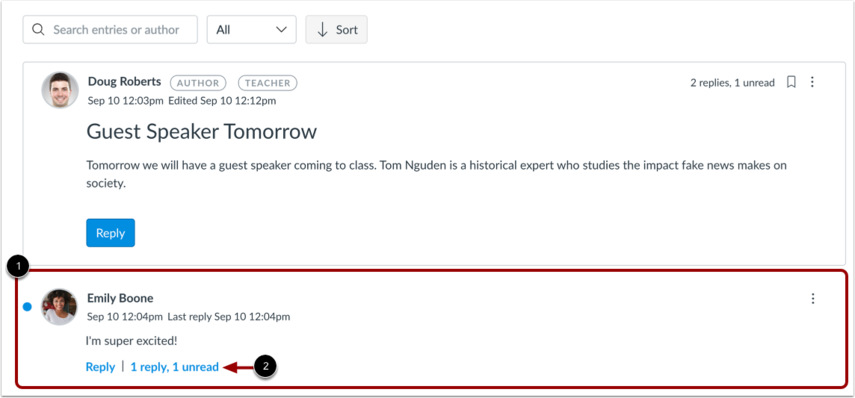In many ways, high enrollment online courses — those with 100 or more students — don’t vary drastically from their smaller counterparts. Several best practices for teaching transcend class enrollment size and modality. Fundamental instructional design and pedagogy practices are beneficial in your online course, no matter its size. These include creating a clear, navigable course design; fostering connections among students, instructors, and content; and providing engaging learning activities that build towards course learning outcomes).
When classes have large enrollments, however, unique questions may arise:
- How can I save time during the course term without sacrificing quality?
- How can I get students to engage?
- How can I ensure academic integrity?
The following online teaching best practices address these challenges.
Course site organization
Organizing your course content in a clear and consistent structure cuts down on the time spent answering questions about finding and using resources. You can do this with Canvas templates or create your own format. This frees up time to focus on meaningful interactions with students during the term.
- Develop a simple, consistent pattern (e.g., each module corresponds to a week, a unit, a chapter, etc.). Explore the Information Architecture mini-course for ideas.
- Categorize your content within each module under headings that provide instructional prompts like Watch, Read, Discuss or another relevant activity type.
- Explain your structure and organization at the beginning of your course (e.g., in your syllabus). Record a video walkthrough using Panopto.
- Schedule consistent deadlines. For example, designate original discussion posts as due on Wednesdays at noon and replies as due on Fridays at noon.
- Use tools supported by the University and direct student questions to the appropriate helpdesk.

Efficient class management
Managing 100+ students can quickly become overwhelming. Streamline your class management processes to save time without sacrificing instructional quality.
- Use one communication channel consistently — such as email, a Q&A forum, or course announcements and replies — to avoid the need to check for messages in multiple locations. Let your students know your expected response time.
- Set up discussion boards (and their grading) efficiently. Instead of responding to every post, consider randomly reviewing a smaller portion each week. Use a rubric, keep a library of common feedback for quick responses, and/or incorporate peer reviews. Be sure to clearly communicate your evaluation strategy to students to cut down on any confusion.
- Send regular Canvas announcements with important information for the week, responses to questions, and/or links to additional resources.

Student engagement
While there is no one-size-fits-all approach to curating a “well-liked” course, data shows the perception of course quality is largely determined by instructor engagement with students, regardless of class size or modality (Cash et al., 2017).
- Offer regular check-ins, including virtual office hours, routine course announcements, and timely feedback on learning activities.
- Establish clear Netiquette guidelines for course-related interactions.
- Set up collaborative learning activities by creating small discussion groups or peer-reviewed assessments in Canvas.
- Provide dedicated time and space for students to share questions, thoughts, and feelings with each other.
- Incorporate active learning strategies to put students in charge of their learning and further build a learning community.
- Pose a poll in Zoom, Top Hat or Poll Everywhere for instant feedback.
Assessments
Variation in assignments, fairness in evaluation, and transparency in evaluation methods are essential qualities of any successful course but may require additional considerations in high-enrollment classes.
- Offer a variety of learning activities that build upon prior work. For example, ask students to define a key concept on a quiz before assigning a project that requires analysis using that terminology.
- Incorporate group or peer-to-peer assignments to build social connections and meet collaborative learning goals. Ensure expectations are outlined and consider including examples of prior students’ feedback.
- Streamline grading by using clear and detailed rubrics for assignments within Canvas and take advantage of its Speed Grader functionality.
- When applicable, use automatically-graded assignments to help reduce time spent grading manually. Include automated, detailed feedback in answer responses. For example, share where students can find correct responses in course materials, how to improve, or why an answer is correct/incorrect.
Academic integrity
Academic integrity is a concern at any class size but takes on additional concern as class size increases.
- Create multiple versions of exams by randomly selecting questions using item banks in Canvas.
- Consider the weight of exams — the higher the weight, the higher the incentive for academic dishonesty (Varble, 2014; Munoz & Mackay, 2019).
- Use more active and authentic assessments, e.g., annotations using Hypothes.is, group presentations using VoiceThread, and collaborative note-taking or practice-based writing using Google Docs.
- Break large assignments into smaller stages (i.e., scaffolding).
- Work with students to create outcome-specific assessments relevant to their personal learning goals.
- Take advantage of UM System-supported academic integrity tools: SmarterProctoring, Turnitin and LockDown Browser. Sign up for upcoming training or reach out via email to our Academic Technology team for immediate help with these tools.

